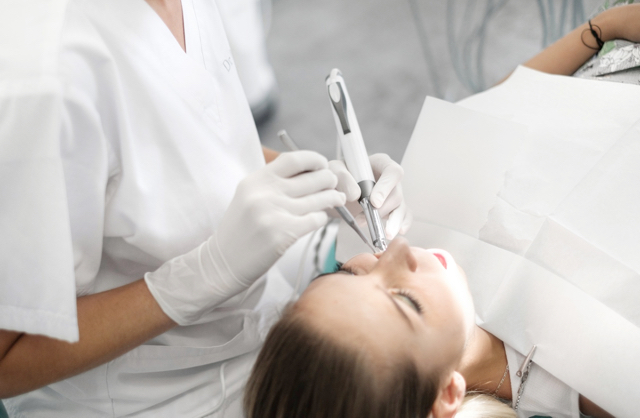
Adult Dental Anesthesia
Anaesthesia
A local anaesthetic stops the excitability of the sensory nerve fibres, temporarily and reversibly. It therefore inhibits the pain, for a given period of time.
In the formula used, we find the local anesthetic: it is one of the molecules ending with the suffix "-caine" like lidocaine or ropivacaine, more modern.
In addition to the anesthetic, adrenaline is also present for its vasoconstrictive effect, which will reduce bleeding, increase the concentration of the product locally and prevent its diffusion in neighbouring regions, thus allowing a longer period of action.
Dental surgeons are trained to know exactly where to prick for each type of dental procedure, because it is a matter of more or less localized numbness, and of numbing this or that type of nerve.
Methods and accompaniment to live it better
Methods have been worked on to accompany the patient both in his anxiety about the injection but also in the pain it may cause:
- Pre-anaesthesia or surface anaesthesia
It is indicated for children and very anxious patients. The mucous membrane is anaesthetised before the injection, either by using an anaesthetic spray or gel at the site where the injection is to be made, or by using a cryogenic spray (which causes intense localised cold) to block sensitive receptors in the mucous membrane.
- Osteocentral anaesthesia (Quicksleeper)
It represents an interesting alternative. Based on the injection of the anesthetic into the cancellous bone surrounding the tooth, they use the blood circulation within the Volkman channels to diffuse both mesially and distally. Due to their low diffusion to the mucous membranes, soft tissue anaesthesia is very rarely used, which avoids disturbing younger children and removes the risk of self-biting that is so common with infiltration techniques. In children, the bony cortical bone is thin and its passage is done by simple pressure and without pain.
With QuickSleeper, all your anaesthesia is fast, painless, without the stress of failure or post-operative after-effects.
Dental care under general anaesthesia
The pedodontist (paediatric dentist) makes every effort to find the best possible conditions for each child's care, according to his or her abilities and capacities.
Treatment under general anaesthesia
We offer a dental treatment under general anaesthesia in our practice, with a team of anaesthetists who will come to the practice on the day. This procedure is possible under certain conditions that we will evaluate during our first consultation.
Dental treatment under general anaesthetic is the ideal solution for children with the following characteristics
- Young and uncooperative
- Extreme fear of the dentist
- Extensive care
- Cerebral palsy
- Autism
- Physical or mental disability
- Nausea reflex too strong
For the comfort and well-being of the child
Far from being a failure and an emergency solution, this possibility offers undeniable comfort for the child:
- No stress
- No discomfort or unpleasant feelings
- Minimal postoperative pain
- Saves time: all treatments are done at once
- Absence of psychological trauma in the stressed/phobic child
- No memory of the intervention
- Possible care for children with disabilities, autism, cerebral palsy
- Reasonable or even short treatment times


